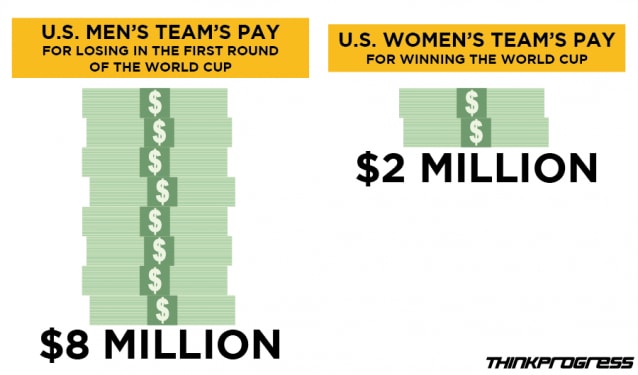This is how the gender gap works in sport

Net profits ... should male tennis players earn more because they attract larger crowds?
Image: REUTERS/Kevin Lamarque
Stay up to date:
Gender Inequality
The level of prize money awarded to male and female tennis players is the subject of intense debate, after the CEO of the tennis club which hosted the BNP Paribas tournament said women were riding on the "coat tails" of the men’s game.
Raymond Moore suggested that if he were a "lady player", he would “go down every night on my knees and thank God that Roger Federer and Rafa Nadal were born, because they have carried this sport. They really have.”
Moore later admitted his comments were in poor taste, but Novak Djokovic has now joined the public discussion, saying: “We have much more spectators on the men’s tennis matches. I think that’s one of the reasons why maybe we should get awarded more.”
Line call
All four Grand Slam tennis events now offer equal prize money to male and female champions. The US Open was the first to do so in 1973. Back then Wimbledon was paying a small fraction of the men’s prize figure to women, and the UK tournament was the last to even up the score in 2007.

What about other sports?
Many other sports are still a long way behind on equal pay.
Total prize money for the 2014 men’s golfing PGA tour, over $340 million, was more than five times that of the 2015 women’s LPGA tour.
The minimum salary for National Basketball Association players in the 2015-2016 season is $525,093, the maximum $16.407 million. For women players in the 2015 season, the minimum salary was $38,913, the maximum $109,500.
In football, the US Women’s Team won $2 million for winning the 2015 Women's World Cup. For losing in the first round of the 2014 World Cup, the US Men’s Team was paid four times as much.

In the UK, a study found that 30% of sports rewarded men more highly than women.
The biggest disparities in prize money were found in football, cricket, golf, darts, snooker and squash.

Why is there such a big difference?
The reality is that in many sports, the women’s game makes less money. According to the Wall Street Journal, there was $17 million in sponsor revenue for the 2015 women's World Cup compared to $529 million for the 2014 men's tournament.
The current furore over tennis reflects broader trends in the way society values - or fails to value - women's sport.
Have you read?
Don't miss any update on this topic
Create a free account and access your personalized content collection with our latest publications and analyses.
License and Republishing
World Economic Forum articles may be republished in accordance with the Creative Commons Attribution-NonCommercial-NoDerivatives 4.0 International Public License, and in accordance with our Terms of Use.
The views expressed in this article are those of the author alone and not the World Economic Forum.
Forum Stories newsletter
Bringing you weekly curated insights and analysis on the global issues that matter.
More on Equity, Diversity and InclusionSee all
Silja Baller
May 15, 2025
Tea Trumbic and Dhivya O’Connor
May 13, 2025
Harrison Lung and Hatem Bamatraf
May 7, 2025
Zainab Azizi
April 9, 2025



